| 1.
The "Wannsee Conference," January 20, 1942 (and Babi Yar, Sept.
29, 1942)
(back to top)
- Called Wannsee Conference because it was held in a villa near the
Berlin lake Wannsee that had confiscated from a Jewish owner--it was
actually known as the "assistant secretaries of state meeting,
since the attendees held the rank of Staatssekretär--,
this gathering was long considered to mark the point at which the total
genocide of all Jews was decided upon. However, we now know that that
decision had been made earlier, and the meeting served primarily to
inform the civilian bureaucracy and the Nazi party administration that
SD-chief Reinhard Heydrich was in charge of the 'operation.'
- In fact, the meeting was originally called for Dec. 9,
1941, but was postponed so that Heydrich could attend Germany's
declaration of war on the US after Pearl Harbor. See the original
invitation, textbook p. 97, with Göring's July 31
commission memo to Heydrich, p. 96.
- Historians are divided over whether the decision to murder all Jews
was made before or after the German invasion of the Soviet Union, called
Operation Barbarossa, on June 22, 1941.
- Genocide on a grand scale was already being practiced, for instance
at the Babi Yar canyon on the outskirts of Kiev in the Ukraine (today
known for the nuclear reactors in nearby Chernobyl, one of which blew
up in 1987). In 2 days, on Sept. 29-30, 1941, Heydrich's
SD task forces massacred 33,771 people (the SD report gives this figure)
in about 72 hours.
 Mathematically
that works out to about 8 people per minute, nonstop, a huge and horrifying
achievement. Mathematically
that works out to about 8 people per minute, nonstop, a huge and horrifying
achievement.
- about.com's
Babi Yar page
- In the following years another 60-70,000 people were murdered
there, not all of them Jews, including a Ukranian soccer team that
had beat the German army team.
- In 6 weeks in Aug.-Sept. 1943 prisoners were forced to excavate
and burn the remains, destroying most of the evidence (recall the
corpse-burning scene in Schindler's List; description
on about.com).
- However, when a dam burst in the 1960s, human bones were washed
up. This event was memorialized in a poem by the Ukranian poet Yevgeny
Yevtushenko (text
of Babi Yar poem), and set to music by Dmitri Shostakovich in
his symphony no. 13.
- Back to Berlin. (text
of "minutes" of meeting) If nothing else, this event showed
that mass shootings, although possible, were also problematic in certain
regards. Gas vans--trucks whose exhaust was routed into the cargo compartment,
which was filled with people--we tried as well, and even other, more
horrifying means, such as hosing groups of victims with acid [Laurence
Langer reference].
- Three groups met on Jan. 20, 1942: the SS around
Heydrich (in the film: snappy dark uniforms with insignia); Nazi
party adminstrators from the East (greenish uniforms);
and German state bureaucrats (civilian clothes
mostly).
- Their behavior illustrates principles of functionalism
and structuralism. We will see this later in the
psychological schools of thought emphasizing character traits
vs. situation as primary motivating factors for
human behavior.
- "Preemptive obedience" (vorauseilender Gehorsam,
a historians' term) and "working towards the Führer"
(used by a contemporary, references: Pridham/Noakes, Kershaw)
- We then discussed the 1984 German TV film (imdb
Wannsee film page; 2001 US
reenactment "Conspiracy" is not nearly as good). The professor
added three points to the ones students brought up:
- Heydrich: "Complicity creates responsiblity" (Mitwissen
schafft Mitverantwortung): Once the bureaucrats had been officially
informed, they would be less likely to blow the whistle.
- Shooters fainting at mass graves proves that Germans are decent,
not subhumans
- Once Jewish emigration from Germany is forbidden, genocide is
the plan.
|
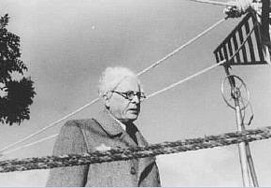
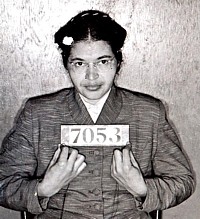 she
had died the night before, I began the lecture with a short tribute
to Rosa Parks, the woman credited with having begun the civil rights
movement in December 1955 when she refused to give up her seat on a
public bus in Alabama to a white man.
she
had died the night before, I began the lecture with a short tribute
to Rosa Parks, the woman credited with having begun the civil rights
movement in December 1955 when she refused to give up her seat on a
public bus in Alabama to a white man.
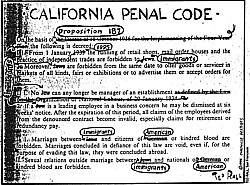

 head
of the Lodz ghetto, liked the power, had his own "court" historian.
head
of the Lodz ghetto, liked the power, had his own "court" historian.
 Jewish
policeman in the Otwock (near Warsaw) ghetto.
Jewish
policeman in the Otwock (near Warsaw) ghetto.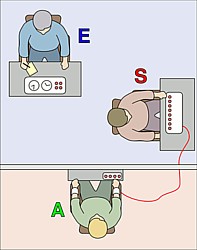
 (
( 450
men participated in a number of other massacres after Jozefow: Lomazy
(August 1942), Miedzyrzec (August 1942), Serokomla (September 1942),
Kock (September 1942), Parczew (October 1942), Konskowola (October
1942), Miedzyrzec (a second action in October 1942) and Lukow (November
1942), as well as the so-called "Harvest Festival" massacre
in Maidanek camp (November 3-4, 1943).
450
men participated in a number of other massacres after Jozefow: Lomazy
(August 1942), Miedzyrzec (August 1942), Serokomla (September 1942),
Kock (September 1942), Parczew (October 1942), Konskowola (October
1942), Miedzyrzec (a second action in October 1942) and Lukow (November
1942), as well as the so-called "Harvest Festival" massacre
in Maidanek camp (November 3-4, 1943).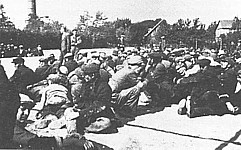
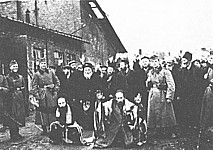
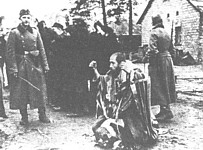
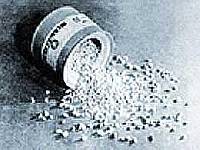 engineers,
architects, doctor-evaluators (Nazi Designers of Death)
engineers,
architects, doctor-evaluators (Nazi Designers of Death) camps
with whips, clubs and weapons
camps
with whips, clubs and weapons